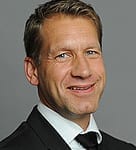Congress Newsletter 2021
EA21 Newsletter: The Andreas Hoeft Research Lecture 2021
Friday December 17, 11:00 – 11:45 : Channel 2

Prof Hunter will detail how Prof Dr Andreas Hoeft (Bonn, Germany) made an extensive contribution to the development of the ESAIC over more than a decade. She says: “This lecture mainly recognises his major contribution to clinical research in the Society. Prof Hoeft led the development of a Clinical Trial Network (CTN) based at the ESA Secretariat over 10 years ago with many of the other ESA Board members at that time, and especially Prof Paolo Pelosi (Italy).”
She will explain how, in anaesthesia, many clinical conundrums cannot be answered by small, single centre prospective studies. It was realised that it was necessary to set up an international network that enabled such studies to be addressed by investigating very large numbers of patients throughout Europe. This would require significant administrative support long term. The ESA Board agreed that funding should be made available for this network to be managed at the Secretariat, led by the Research committee who would answer to the BJA Board.
“By 2010, the CTN had been established and the first international studies were ongoing. In the last decade, at least 28 publications have ensued in peer-reviewed journals. Several of the publications are in high impact general medical journals which is unusual in anaesthesia,” says Prof Hunter. “Many of the publications will be discussed in this lecture. It is thrilling to note the breadth of this research, in many anaesthetic sub-specialities such as obstetric and paediatric anaesthesia, as well major studies on ventilatory practice during general anaesthesia and on mortality during elective and emergency surgery.”
In 2021, such trials are still continuing and being established. Many of the publications have had Prof Hoeft as an author, signifying his detailed involvement in their development and execution. Some of the lessons learnt from undertaking large multicentre clinical trials across Europe will be considered by Prof Hunter. She says: “Many of the research questions raised were of Prof Hoeft’s making and this is acknowledged in the lecture.”
She concludes: “Undoubtedly, Prof Hoeft would have wanted these trials to continue and I urge all members of the ESAIC, from across Europe, to continue to get involved.”
Read More of our special newsletter covering our virtual congress









